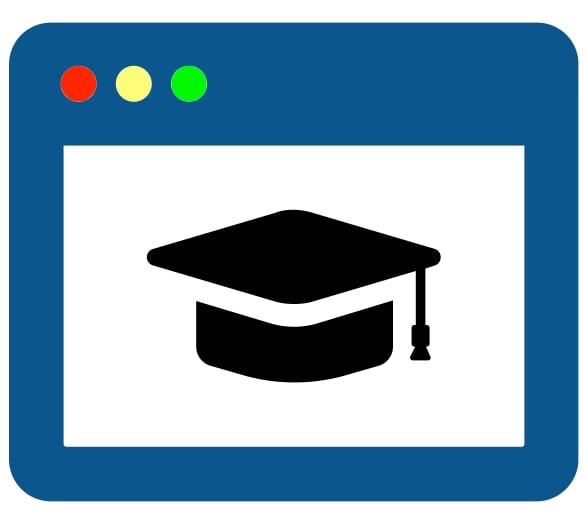Academic Continuity through eLearning Technologies

Introduction
This website was created when faculty were asked to transition their Winter 2020 courses online during the pandemic.
It was updated on January 10, 2024, to reflect changes with Bb Ultra.
Things to Consider
Moving your course online involves more than choosing the right technology tools. Start thinking through these questions:
Tips for Instructors
- Modify your expectations - what are the essentials that you need to keep?
- Are there due dates or policies that you can relax to accommodate student anxiety?
- Can a test or quiz be an open book or postponed?
- If participation and attendance are part of your course, how might that look online? For example, can you use online discussions to maintain community AND encourage students to be present and engaged?
Tips for Students
- Ensure you can log in to GVSU's learning management system (Bb Ultra) and your email. If you have trouble logging in, contact the IT Service Desk.
- Review your instructor's syllabus and schedule to keep on track.
- If your instructor has included due dates in Blackboard, those reminders will also appear on your Bb activity stream and Bb calendar.
- Check your email and Blackboard Messages regularly for important information from your instructor.
- Be mindful of etiquette when communicating with professors and classmates online.
- Some courses will include live synchronous meetings or online office hours using Zoom. To use this technology, you must have a device with a webcam and microphone.
First Steps
We understand that for many faculty, moving to remote teaching will involve pushing personal comfort levels in a very limited amount of time. Consider the suggestions in this list as a baseline for where to start.
- Revise your syllabus to reflect any changes you make to your course structure and assessment plans.
- Use Blackboard's announcements to communicate easily with all students.
- Use your Blackboard to provide students access to essential course documents and resources.
- Use Zoom to hold LIVE meetings and online office hours with students. This article explains how to add a Zoom meeting link to your Bb course.
- Allow students to submit written assignments using Blackboard's assignment tool.
- Post your lecture notes, PowerPoint files, and other essential resources in Blackboard. See this article for assistance with posting a variety of content in Bb.
- Creating and managing assignments in Blackboard
- Grading in Blackboard
- Grading Discussions in Blackboard
Next Steps
Grand Valley offers a wide variety of tools and resources for online teaching. The suggestions in this list are designed to take the quality of your students' experience to the next level by drawing on the strengths of digital tools.
- Consider using Blackboard's online discussions to maintain community and encourage student engagement.
- Increase your options for delivering content - instead of posting PowerPoint files or lecture notes, use Panopto Video to record yourself narrating your lectures.
- Use Blackboard's Grade Book to ensure students can access their current grades.
- Use Ally to ensure that your learning materials and experiences are accessible to all students.
- Organize your Blackboard site so students don't struggle to find what they want. See this article for assistance with Blackboard Learning Modules and Folders.
Later Steps
Some of these suggestions may take more planning and development than you want to invest right now. As time allows, though, we encourage you to explore them. Our eLearning team staff is more than happy to help you put them into practice.
- Have students submit videos as assignments with Panopto.
- Use Blackboard's private journal as creative alternative assessments.
- If you're creating Panopto videos for your students, break them into separate videos of 5 to 10 minutes each.
- Consider providing voice or video feedback on your students assignments through the Blackboard assignment tool.
- Use Blackboard's groups tool to hold small group discussions and allow students to submit group assignments.
- Consider creating brief "weekly videos" using Panopto as a way to maintain a sense of community and convey information to your students.
- Use a tool like Padlet to allow students to conduct video-based discussions—a great way to build community and work against feelings of isolation.
So what about copyright?
Teaching and learning take place against the broader backdrop of intellectual property and copyright laws. The rapid transition to remote instruction raises a number of questions about how copyright regulations apply. The links below provide some general guidance on copyright policies during times of crisis instruction.
- Copyright Basics, with reference to COVID-19. From the Grand Valley State University Scholarly Communications librarians.
- A Public Statement of Library Copyright Specialists: Fair Use & Emergency Remote Teaching & Research.
"It is evident that making materials available and accessible to students in this time of crisis will almost always be a fair use. As long as we are being thoughtful in our analysis and limiting our activities to the specific needs of our patrons during this time of crisis, copyright law supports our uses. The fair use doctrine accommodates the flexibility required by our shared public health crisis, enabling society to function and progress while protecting human life and safety."
—Public Statement of almost 200 Library Copyright Specialists
